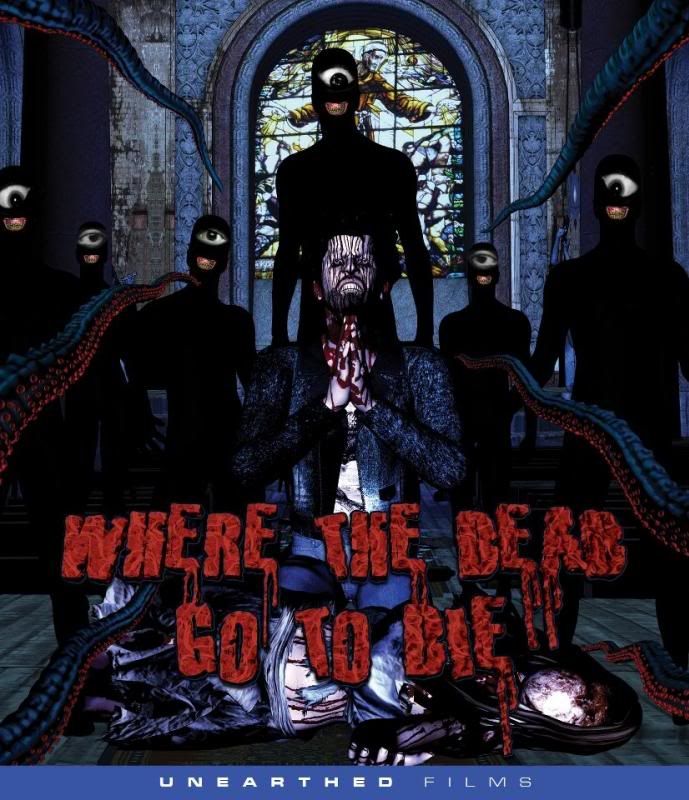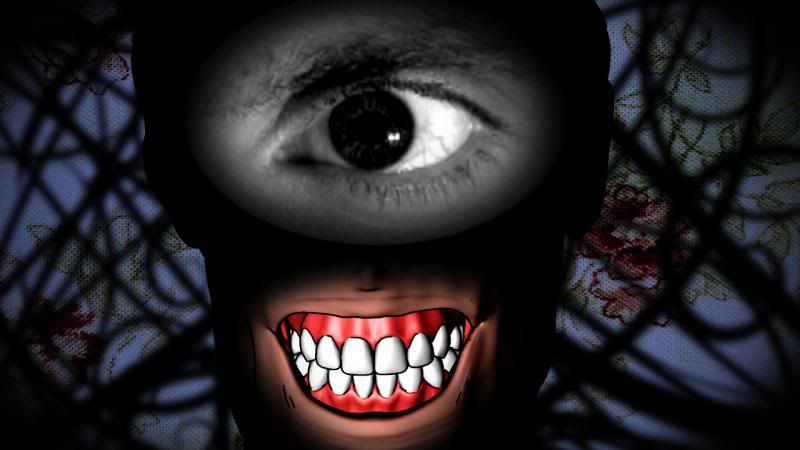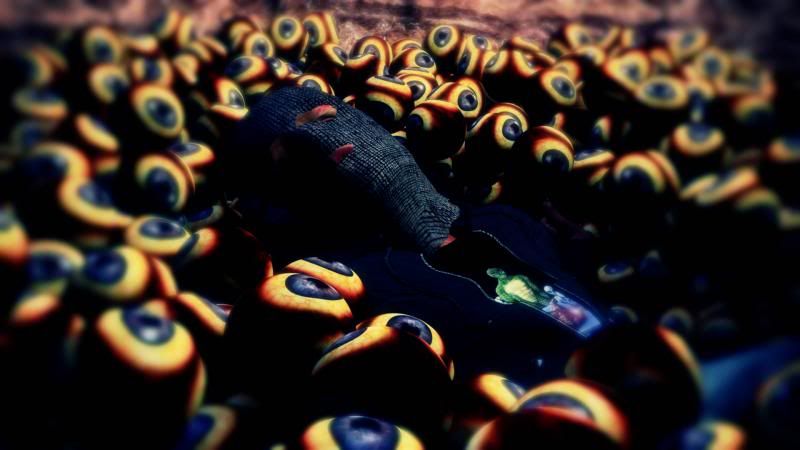6/25/13
WHERE THE DEAD GO TO DIE: Animate and Devastate
Where the Dead Go to Die (2012)
Director: Jimmy ScreamerClauz
Writer: Jimmy ScreamerClauz
Cast: Ruby Larocca, Joey Smack, Linnea Quigley, Trent Haaga, Devanny Pinn
Website: http://www.deadlyproductionsrecords.com/wtd.html
Animated films possess the ability to push boundaries like no other artform; the limitations exist only in the imaginations of the creators. From Émile Cohl's ghostly chalk-line images in 1908’s Phantasmagoria, to the grotesque works of stop-motion animator Robert Morgan (Bobby Yeah!, The Cat with Hands), horrific animated films exist to provoke and startle in a medium that transcends notions of being made "just for kids". Adults will find plenty of provocative material to mine in the realms of stop-motion, hand-drawn, or in the case of this review's subject, shaky computer generated animation.
Animation may have been the only viable forum for Jimmy ScreamerClauz (The Bunnyman) to tackle the miserable themes he’s chosen to examine in his crudely animated, but deeply disturbing feature Where the Dead Go to Die. Curiously, the aesthetic of WTDGTD is akin to the primitive block 3D style of 90's video game “cinema” scenes, an artistic choice that may, at the outset, incite more laughter than screams. It's unclear if this is a deliberate choice by ScreamerClauz, or if he's still familiarizing himself with digital tools; this facet of the film will undoubtedly receive the toughest criticism. It can be argued, however, that the occasionally inane look was an effective way of rendering the massively depressing material more palatable, and succeeds in providing an unnervingly surreal quality to the film. It’s only partially a joke to say that the crude format may be the only way this kind of material – elements of child prostitution, bestiality, and unfettered bloodshed – can legally exist at all.
ScreamerClauz’s film is fashioned from three interconnected stories (Tainted Milk, Liquid Memories, The Masks That Monsters Wear) set in a ramshackle neighborhood on the outskirts of town. It’s a place that exists everywhere, one where addiction, poverty, and abuse prevail, and moments of lucidity are fleeting for those trapped in the clutches of despair. Dark evil not only pervades, it radiates, infecting those on the fringe. As one character explains, it’s a place that serves to “balance” the world of light and dark, life and death. Darkness and death are, indeed, omnipresent, and the monsters dwelling here are very real.
Child characters are the focal point of the film, the structure woven from their horrible stories, and intertwined by visits from a demonic dog named Labby. Tommy is a young boy driven to committing vile acts against his parents, persuaded by Labby that his pregnant mother is carrying Satan’s child. Ralph, a boy born with a horrible deformity, harbors an adolescent crush somewhere between lust and obsession that makes him susceptible to Labby’s sadistic whims. Sophie, the only victim not given a choice by Labby, lives a life of cruel exploitation, prostituted by her twisted father in a child porn operation. Each child's suffering connects them in a heartbreaking union of inescapable misery, one that transcends space and time. ScreamerClauz’s storytelling here, consequently, manages to massacre a familiar slice of comforting Americana – a boy (or girl) and his (her) dog.
ScreamerClauz overcomes the obstacles one might attribute to the “primitive” technological tools by going full tilt with the imagery; no one can accuse him of not going far enough in the graphic depictions of carnage. Torture, rape, and other atrocities litter an overwhelmingly sadistic environment replete with vicious and visceral imagery. It’s twisted, gory, subversive stuff, yet profound in its ability to seep beneath the skin of the viewer despite technical flaws that should dilute the content. Better yet, it isn’t completely nihilistic; there are fleeting moments of sublime joy shared temporarily between the characters. For example, Ralph spends time with his crush Sophie in a beautiful garden, a moment shattered by Sophie’s realization that she must get home before her father "misses" her.
It’s difficult to recommend a film comprised of such wretched, painful material, especially considering the unsophisticated aesthetic employed by ScreamerClauz. It would, however, be a mistake to dismiss Where the Dead Go to Die on those grounds. It’s a film that at its core is one of the most purely horrific films released in some time. By pushing the limits on what is acceptable in film and animation, it opens up new and relevant avenues of discussion for confrontational cinema. It’s certainly not for everyone. It may not be for anyone. Yet it’s a film that absolutely shouldn’t be ignored by those open to the challenges of ScreamClauz’s literal and figurative demons.
Where the Dead Go to Die Trailer
Subscribe to:
Comments (Atom)




